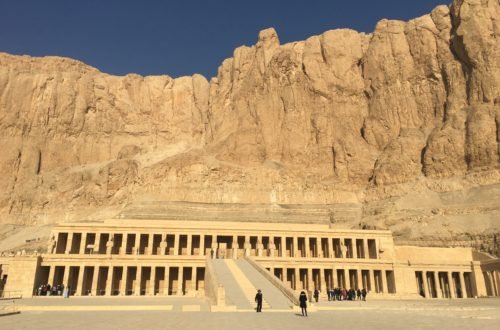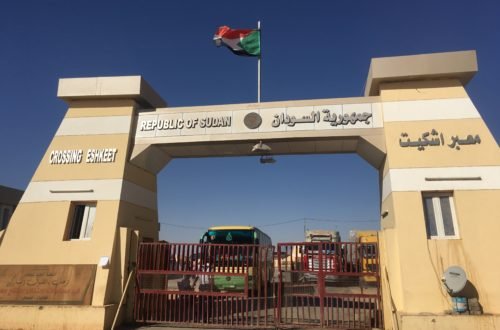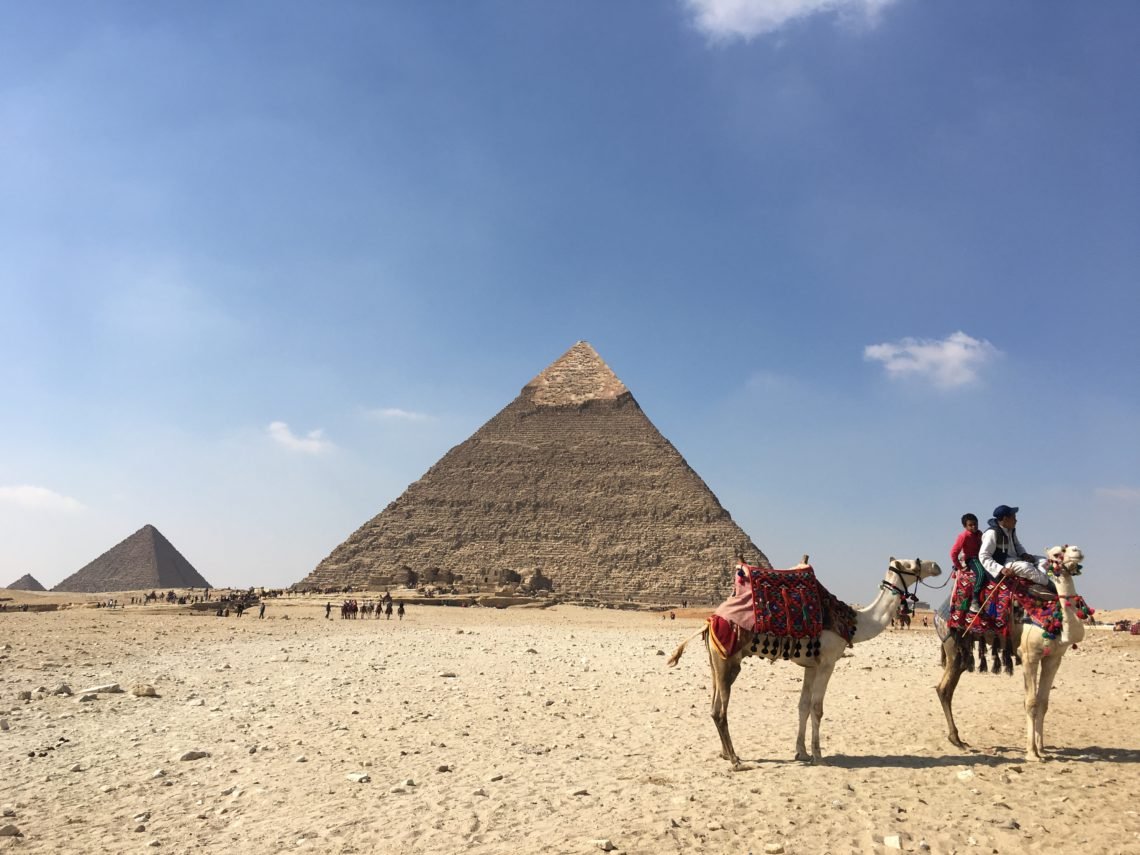
Pyramids, Coptic churches, traffic… the many faces of Cairo, Egypt
I believe Egypt is the only country I heard so many contradictory opinions about. Some would tell how wonderful and incredible it is to see the pharaohs monuments and sail on the river Nile. Others would say it is chaotic, noisy and dirty everywhere, especially in Cairo. And then there will always be the ones warning you against travelling there because “it is a dangerous place”. The fact there are so many different perceptions of the very same place intrigue me.
Of course, I learned at school about the great Ramses II, Toutankhamun and the mummies found inside pyramids and hidden tombs. But that was 2 to 5 thousands years ago! What about modern Egypt? Foreign tourists have fled but life goes on or so I should think. It was a child dream to come to Egypt. As an adult, I intend to look at it through the connexion between ancient and modern.
/ Noisy, busy and dusty, welcome to Cairo!
/ Finding my way in the subway network
/ Last Seven Wonders of the Ancient World in Giza
/ The eternal mystery of the pyramids
/ Saqqara ancient necropolis
/ Inside the mastabas
/ More surprises underground
/ Getting lost in Cairo
/ Old Cairo Coptic district
/ Meeting Touthankamun and the mummies
/ Related: Egypt, Cairo, Pyramids, Sphinx, Mummy, Giza, Saqqara, Toutankhamon, Coptic, mummies
/ Inspiration:
Ramses – The Son of Light (by Christian Jacq, 1995)
The Mummy (film by Stephen Sommers, 1999)
Rome (series by Bruno Heller, 2005-2007)
Noisy, busy and dusty, welcome to Cairo!
My first impression of Cairo: it is noisy, traffic jammed and dusty. Taking a closer look, my opinion had already evolved on the second day. Yes, it is a rather chaotic city to make your way through. If you think about it, you are setting foot in the biggest metropolitan area in the Middle East which counts about 20 million people.
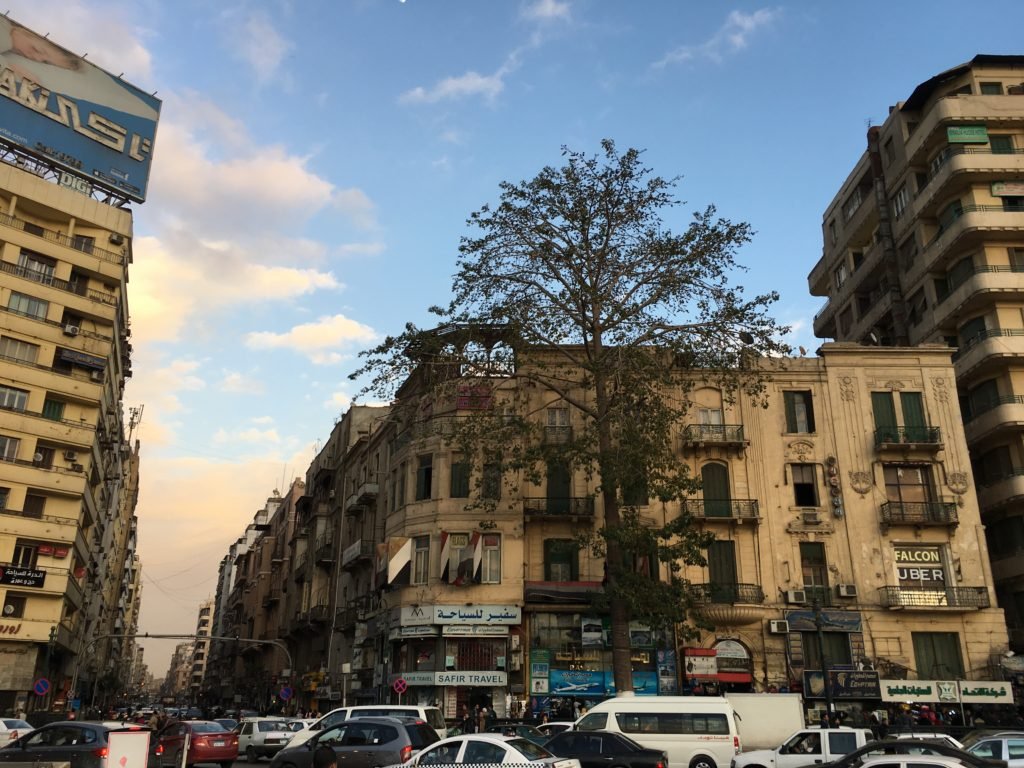
No wonder now streets and subways are packed, especially during rush hour. The air is heavy and grey with pollution. With that being said, rush hour in Paris or New York subway feels much worse. Same with traffic jam and pollution which are definitely more challenging in Delhi, India or Chinese megalopolis such as Shanghai and Beijing.
Cairo is divided in different districts around the river Nile. Old Cairo in the South, also known as the Coptic district, is the most ancient part of the city. Down town Cairo corresponds to the city centre. It includes the famous Egyptian Museum and Tahrir square. Giza on the West which name evokes the majestic pyramids of ancient pharaohs. All these and many more constitute and interesting and diverse network of streets and constructions of all shapes and architectural influences. I shall go later into more details for each of these areas.

Finding my way in the subway network
Cairo’s subway was actually a nice discovery. It is much cleaner than Paris Metropolitain, no urine smell here! You can easily travel from one point to another through the 3 lines network. Every train has a dedicated coach reserved for women only. As a solo female traveller, I feel more comfortable taking those.
Inside, over 95% of the women wear the veil. Many display colourful fabrics such as pink and yellow. A few women (maybe 5%) wear the niqab which covers entirely the body and face, leaving free only the eyes.

On various occasions I would start chatting with some of the passengers. Many speak a bit English, which in any case will be far better than my few words of Arabic. There are students in foreign languages or biotechnology. Regularly, a female street vendor would enter the coach to sell scarf, cosmetics, socks or sweets.
Signs are written both in Arabic and English inside the stations. Every time I was looking for direction, I found someone kind offering help to guide me through. Slowly I am getting used to Cairo’s way and start feeling comfortable.
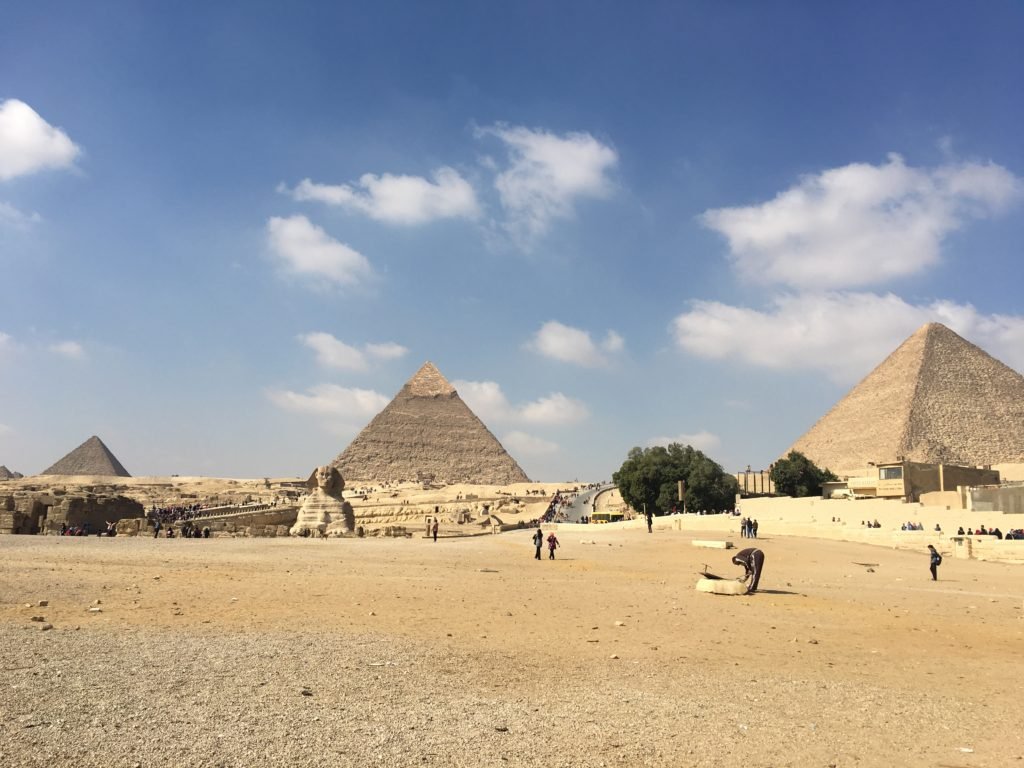
Last Seven Wonders of the Ancient World in Giza
Egypt is naturally associated with the Giza’s pyramids and the Sphinx. Highlight of any cultural trip to Egypt, there are meeting expectations. It is massive, impressive, unique! Every French pupil who attended the course about Antic Egypt would remember General Napoleon Bonaparte’s quote. “Soldiers, forty centuries look down upon you” (Correspondance de Napoleon Ier, Battle of the Pyramids, July 21, 1798). Well, facing the Giza necropolis from the Sphinx entrance, I do feel very small.
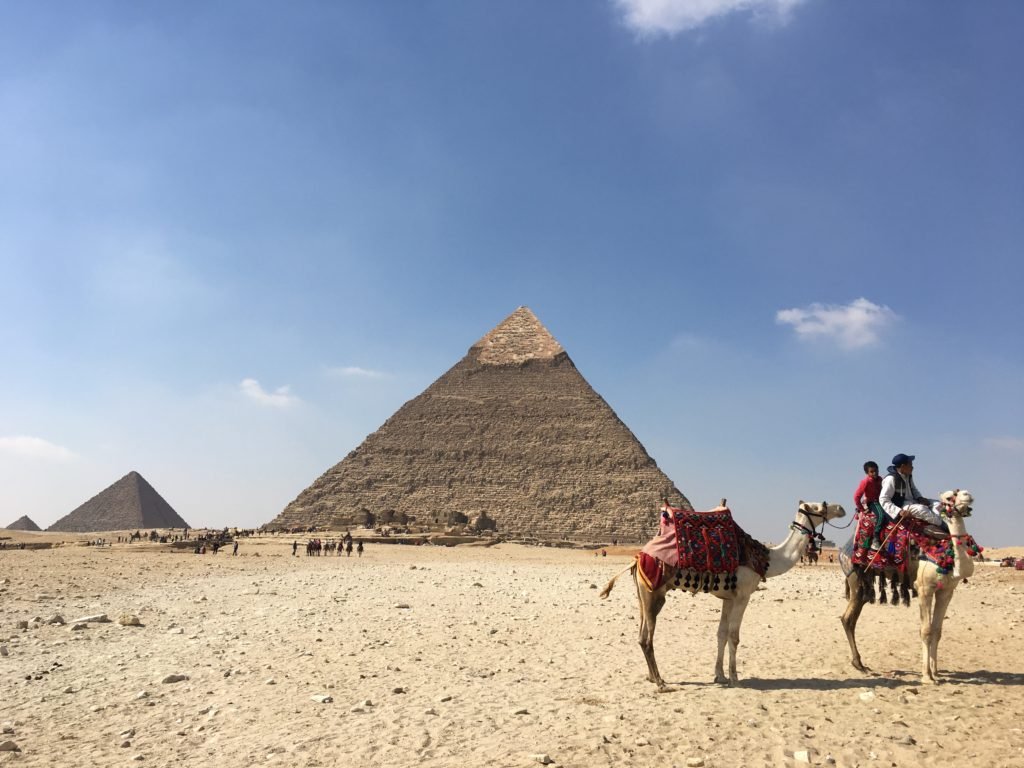
The three pyramids of Khufu “the Great Pyramid” (137m), Khafre (136m) and Menkaure (66m) are perfectly aligned. They were built under the 4th Dynasty, around 2580-2510 BC. The pyramids are one of the Seven Wonders of the Ancient world and the only one still visible today. The remaining six wonders such as the Alexandria Lighthouse and the Rhodes Colossus all disappeared during the course of history.
I walk around the sandy site, the ancient structures are huge. The Sphinx is as big and majestic as I had pictured. The nose-less face is strangely delicate and alive though. I will certainly read the Asterix et Cleopatre comic by Goscinny and Uderzo with a slightly different eye now.
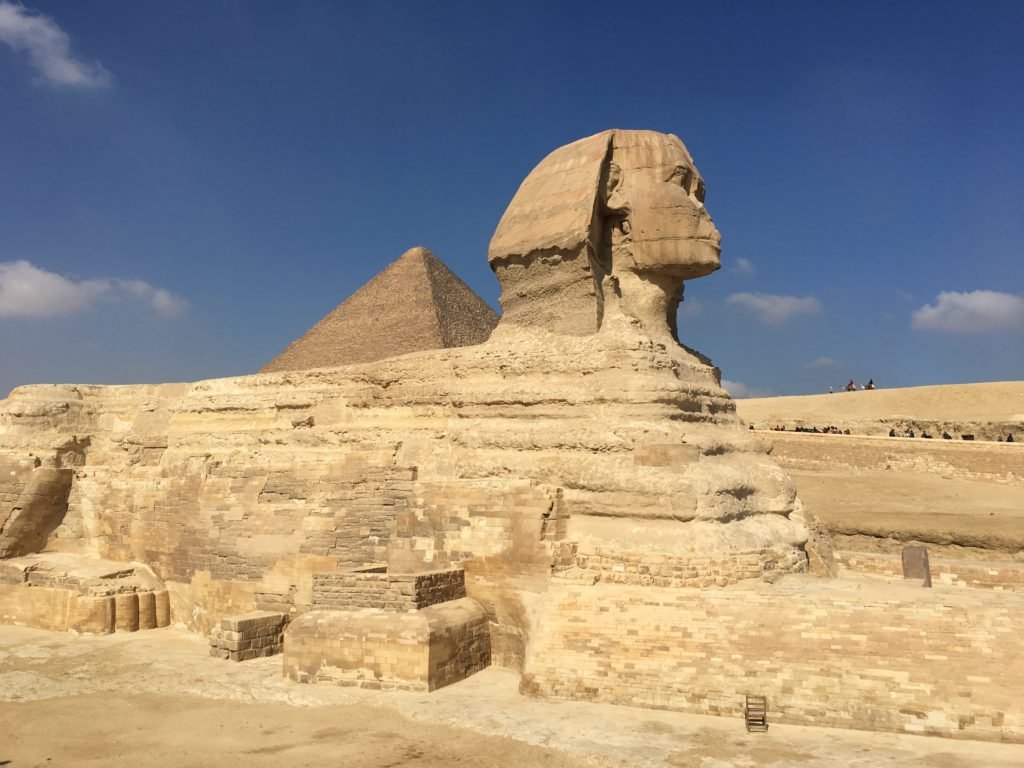
The eternal mystery of the pyramids
The size of the pyramids stone blocks is impressive. Each block weighs an average of 2.5 to 15 tons and Khufu’s pyramids counts an estimated 2.3 millions of them. It is not quite clear how the architects at the time built them. Various theories have been described, from ramps to limestone concrete. The truth is, nobody really knows!

I am willing to learn more about the necropolis, about its history and ongoing archaeological work. Alas, there are no information available on site. I tried with some of the “guides” but unfortunately they gave only very basic information. I am by no means an Ancient Egypt expert. But sadly, I learned nothing new. Worse, the information is sometimes even wrong! The internet remains the best source for the alert nomadic traveller.
As I walk past Khafre’s pyramid, I leave behind the crowd of tourists, mainly Egyptians and Chinese groups. By the time I reach Menkaure pyramid’s entrance, I am alone. It is noon and the sun is now hard. But what a spectacle to contemplate such ancient architecture. The time of pharaohs may be over but I can still feel a sense of mighty power around here.

Saqqara ancient necropolis
I had put on my list the Saqqara necropolis, south of Giza, on the West bank of the Nile. Now that I have seen the Giza pyramids, I wish to continue the journey back in time. The step pyramid of Djoser was built under the 3rd Dynasty, about a century before Khufu’s pyramid. It is much shorter (about 60m) and the stone blocks are smaller. The overall structure designed by architect Imhotep is perfectly balanced though. And it was the first structure of its kind in the region.
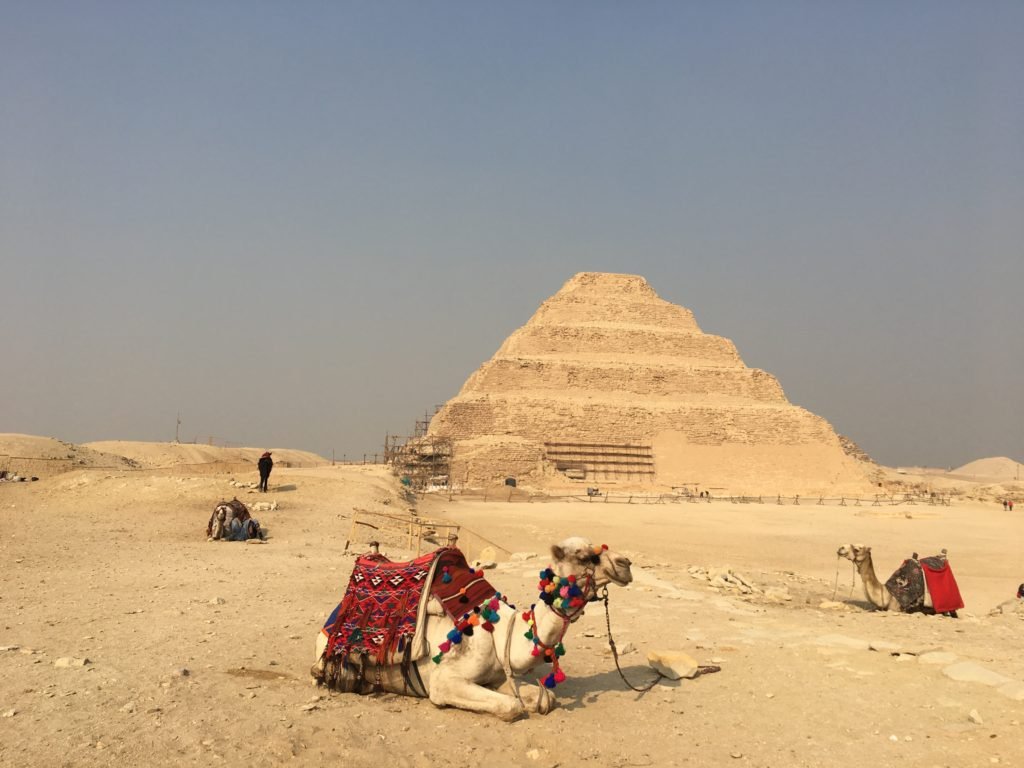
The pyramid is closed the day I am visiting and partially covered with scaffolding. The surrounding includes several temples. One of them displays an elegant colonnade, unfortunately topped by an ugly concrete roof. The now usual camels are hanging around the complexe. A few tourists wander here and there. We are far from Giza’s crowd around Khufu’s pyramid.
The rest of the necropolis beauties are actually hidden underground. The mastabas are ancient burial structures used by the Egyptians pharaoh and nobles under the 1st and the 2nd Dynasty (2890 BC – 2650 BC). In Arabic, mastaba means “mud-brick bench”, whereas in ancient Egyptian it meant the rather more poetic “eternal house”.
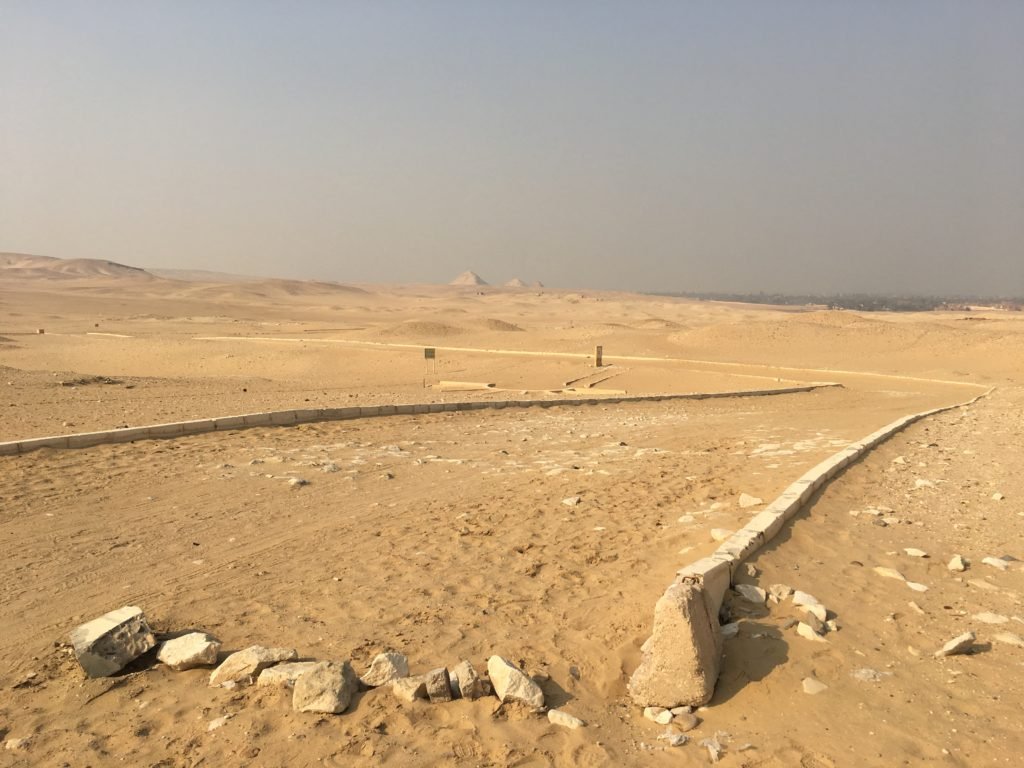
From above, it is now only sand, dunes and rocks. On the horizon, the pointy shape of pyramids is visible here and there. I follow the dusty trail and reach a check point with an armed military guy guarding a pile of stones. The stones reveal soon enough stairs going underground. This is the entrance of Ptahhotep’s mastaba.
Inside the mastabas
Ptahhotep was a high rank noble who lived under the 5th Dynasy (~2400BC). French Egyptologist August Mariette discovered the tomb in 1850. Inscriptions on the walls reveal the many titles of Ptahhotep. “Next after the King”, “Captain of the royal boat”, “Governor of the Great House”, “Chief of the King’s secrets”, and the list goes on.
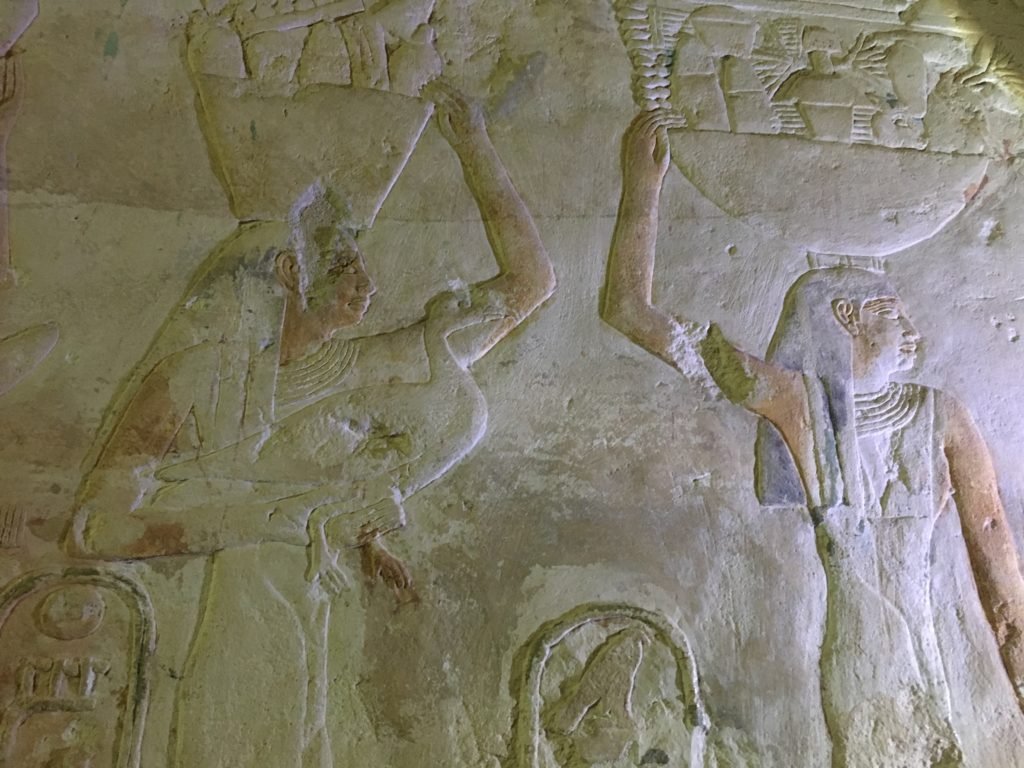
The mastaba is organized in different chambers, including a four column room, two ornamented chambers and various corridors. Carvings and paintings are delicate and full of details, depicting everyday life in Ancient Egypt. Cattle, birds and fruits baskets succeed to sailing boats. This the first time I enter a decorated Egyptian tomb. It feels surprisingly serene and alive, not at all gloomy and austere.
I emerge back to the sun and into the hot desert. Facing the Teti pyramid, I find the Mereruka mastaba. Mereruka was the Vizier of King Teti under the 6th Dynasty (~2330 BC). His tomb is like an underground house with here again various rooms and corridors. The great hall hosts a statue of Mereruka himself (actually a copy since the original is now at the Cairo museum).
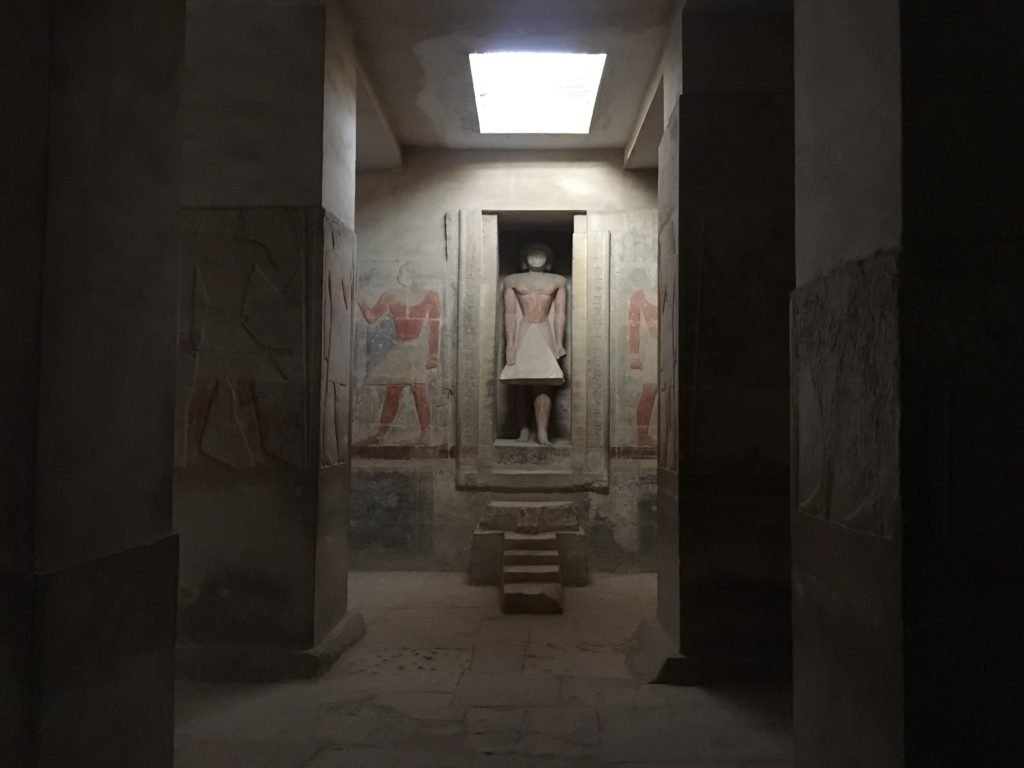
All the walls picture remarkable vivid scenes: hunting, fishing, farming, manufacturing, sailing and many others. In total the mastaba contains over 30 chambers. The majority (21 rooms) are dedicated to Mereruka while the others are devoted to his wife, Seshsechat, and his son, Meryteti. The tomb was discovered by French Egyptologist Jacques de Morgan in 1893. It was not until 1920 that archaelogists found the burial chamber at a depth of about 20m.
More surprises underground
There are more secret chambers underground. One of them is called the Serapeum. According to archaeologists, it is in fact catacombs dedicated to the sacred bull Apis. The bull, under the protection of the god Ptah, was worshipped in the nearby capital city Memphis. After its death, the bull was mummified and buried in a sarcophagus inside the Serapeum.
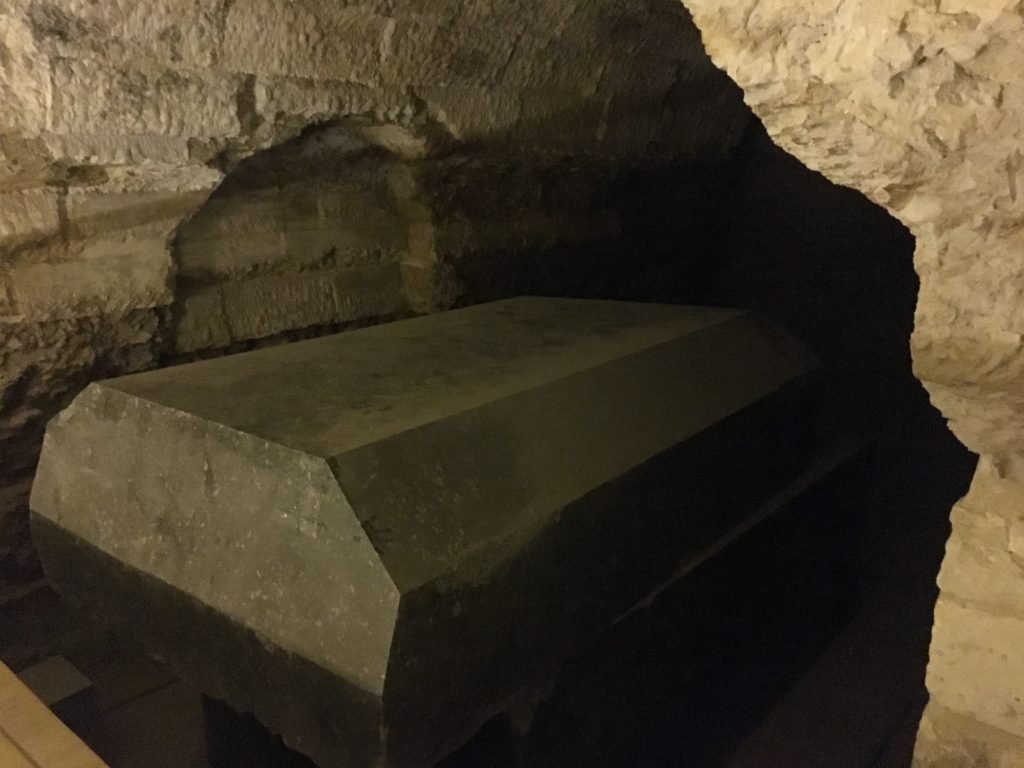
Along the long vaulted corridors are chambers. Each contains a massive black sarcophagus made of granite or basalt, 24 in total. I walk around one of them, it is about 3 meters high. The dark surface is smooth as glass and the lid on top is slightly open. Many theories have emerged, including aliens, to explain how these massive structures were made and what was their purpose. I, too, am puzzled by this extraordinary place. It is nice to think there are still mysteries to be cracked!
Actually, as I am finishing writing this article, I learn that archaelogists just revealed the existence of a new tomb in Saqqara. It is the resting place of high rank priestess names Hetpet and dating back 4.000 years ago. The paintings include pet monkeys scenes which are very unusual.
Getting lost in Cairo
After a day spent in Ancient Egypt necropolis in Giza and Saqqara, I decide to jump into medieval Cairo and explore the Coptic district. Somehow, I got mislead by a Coptic church indicated on my map near to the train station. This is how I find myself wandering in the back streets of Cairo in El Azbakeya district. For sure I am the only Westerner here. People are rather friendly but clearly surprised to see me.

As I progress down the street, it gets narrower and busier. The architecture is not well defined but the mixture of different styles makes a nice colourful blend. Here is an arcade building with wrought iron balconies. There, a common building displays drying laundry. It may sound odd, but the surrounding has a little taste of Italy.
Food smells reach my nostrils and I see from afar vegetable stalls. The street becomes and open air market with everything needed for cooking. Each “store” has its speciality: fruits, vegetables, fish, poultry, bread. Except for the poultry stall which odour is quite strong because of the chickens in their cage, the rest smells delicious. Even the fish area does not stink! As I come closer, I see that all fish are actually alive and wriggling.

Of my three days in Cairo, El Azbakeya district is actually my favourite. Now that I think about it, it is probably because I enjoyed mingling with the locals without being targeted as a tourist by sellers. In other words, I did not feel attacked or under pressure. And the whole walk was a delight for my senses. I wish I could spend more time and knew more about the history of this district, the houses and its inhabitants.
Old Cairo Coptic district
Eventually I made it to the Coptic district. The first thing you see when exiting the Mar Girgis station is the Coptic museum flanked by the Babylon fortress. It is already late in the afternoon and the museum is closed but the nearby Virgin Mary Coptic church is still open. The area is quiet and it is another face of Cairo I discover.

The fortress of Babylon, not to confuse with Babylon ancient city in modern Irak, was constructed around 300 AD by Roman emperor Diocletian. The site was already occupied by a significant river port since 600 BC. Greek geographer Strabo reports in the first century BC that the Babylon settlement was actually founded “by some Babylonians who had taken refuge there”.
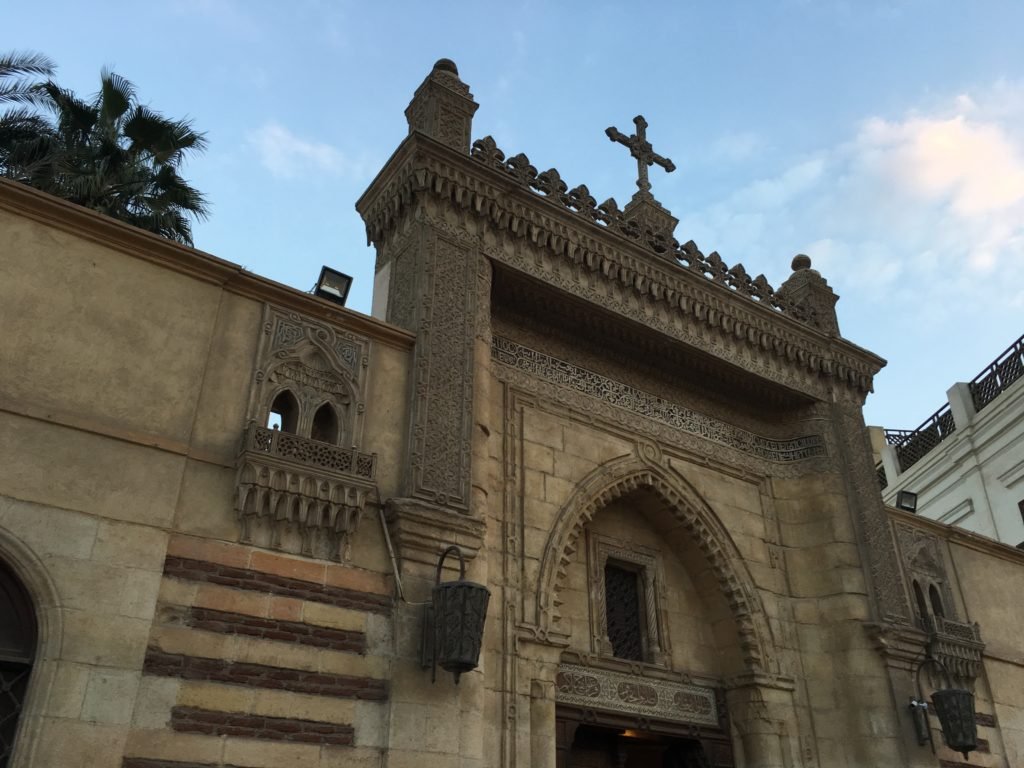
If everyone knows about the Suez canal, very few would have heard about the antic canal connecting the Nile valley to the Red Sea. King Necho II (610-595 BC) started its construction and Persian king Darius (521-486 BC) completed the canal. Today, the area is a southern district of greater Cairo. Only one of the towers of the Roman fortress and several churches within its walls remain.
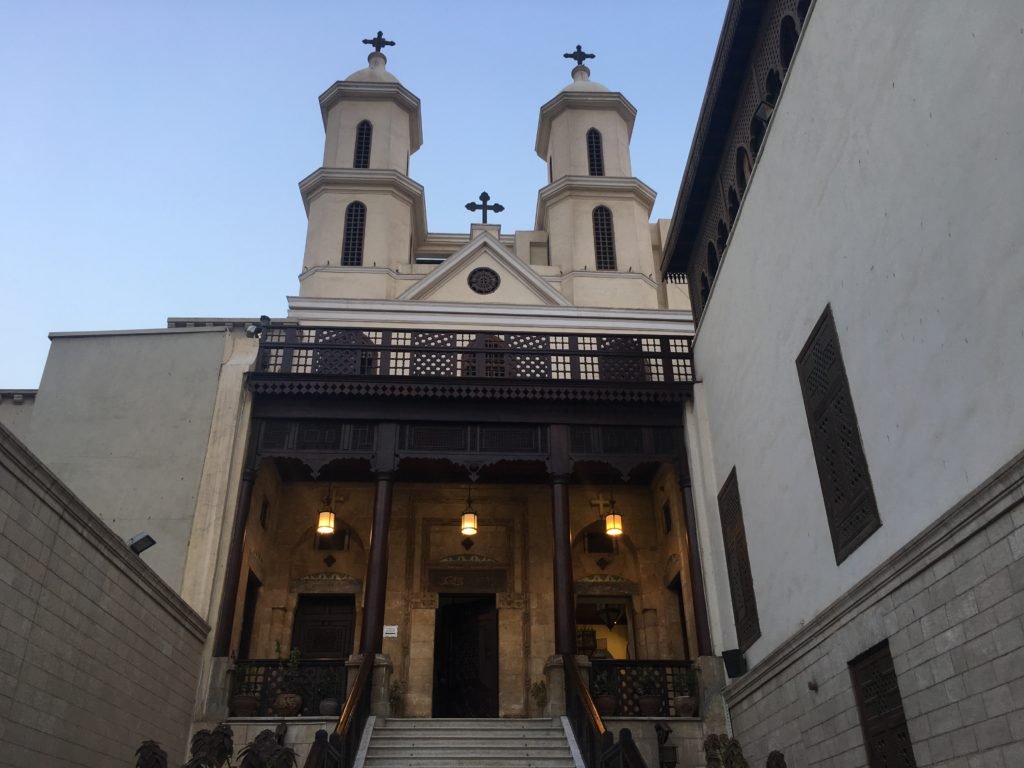
Saint Virgin’s Mary church, also known as the Hanging Church dates from the 4th century AD. The architecture is Basilican style and the foundations are actually two towers of the Babylon fortress. Outside, the visitor passes through a beautiful entrance door into a courtyard. On top of the white stairs stands the Hanging Church. Inside, the air smells of incense. The interior is entirely decorated from bottom to ceiling with icons (110 in total), carved wood and coloured stones.
Meeting Touthankamun and the mummies
A visit to Cairo would not be complete without the Cairo Museum. The great hall is majestic. At the back stand the colossal statues of pharaoh Amenhotep III and his wife Queen Tiye. My visit in the museum brings me back a century ago. Nothing much has changed it seems. Old vitrines display countless items of Ancient Egypt and yellow labels with type writting explanation in French and English. Each room has its topic: papyrus, sarcophagus, scribes, farming, etc.

On the first floor, a restricted area gives access to Toutankhamun treasure and to the mummies rooms. In the first, gold is shining everywhere. I cannot take my eyes off the world famous burial mask. The first time I saw the Mona Lisa in Musée du Louvre in Paris, I was slightly disappointed. I was not when I saw Toutankhamun’s gold and blue mask. It weights 11kg with carvings of Horus falcon god on the chest and hieroglyphs on the back. I truly have the impression he is looking at me. It could seem disturbing but it is not. His look is both kind and serene. Royal.
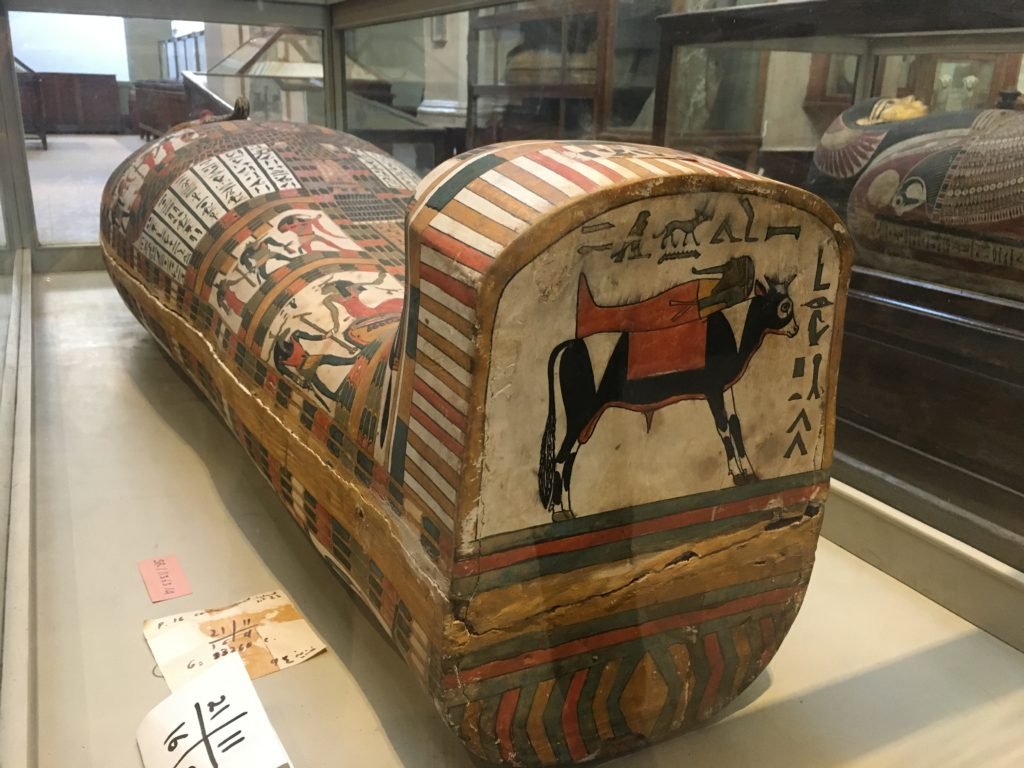
Another great moment of the visit is the royal mummies room. Great pharaohs and queens lie in vitrines. Their names are Merenptah, Ramses II, Amenhotep II, Tuthmosis II and IV, Sethi I, Hatchepsout and Tiye. Their faces are dry and brown but their expression and character traits remain. I can not wait to see their resting places in the Kings and Queen valleys near Luxor.
It is time for me now to take the train to South Egypt. Cairo is a complex patchwork of cities within the city. Each district has its own personality. Three days are definitely not enough but it gives a fair introduction to the country. Once a settlement in the shadow of great capitals like Thebes and Memphis, Cairo has become an active megalopolis built on centuries of rich history.
Want to learn more about Egypt and Cairo? Here are a few links :
https://www.ancient.eu/article/862/the-step-pyramid-of-djoser/
https://www.cheops-pyramide.ch/khufu-pyramid/rope-roll.html
http://www.ancient-egypt.co.uk/saqqara/pages/saqqara_jul_2006_0009.htm
https://news.nationalgeographic.com/2018/01/egypt-tomb-woman-priestess-hetpet-archaeology/


